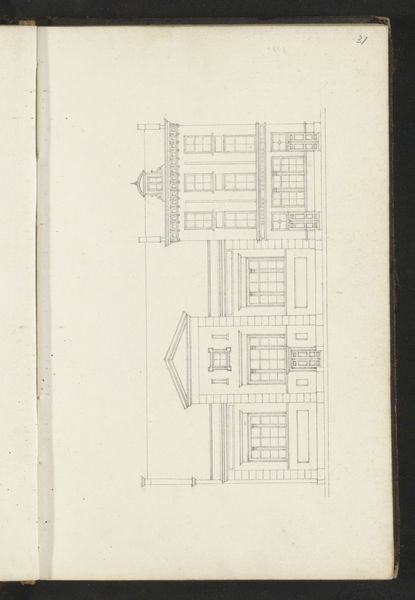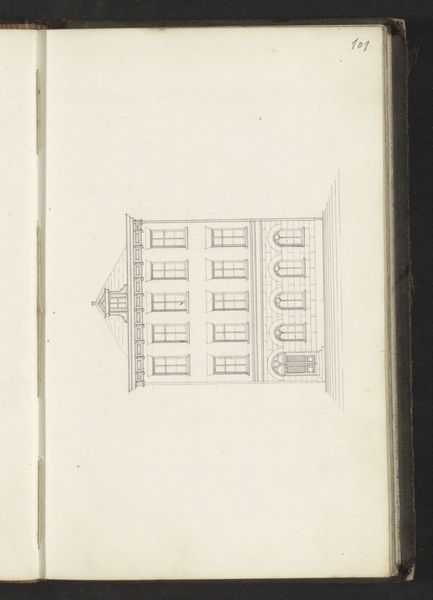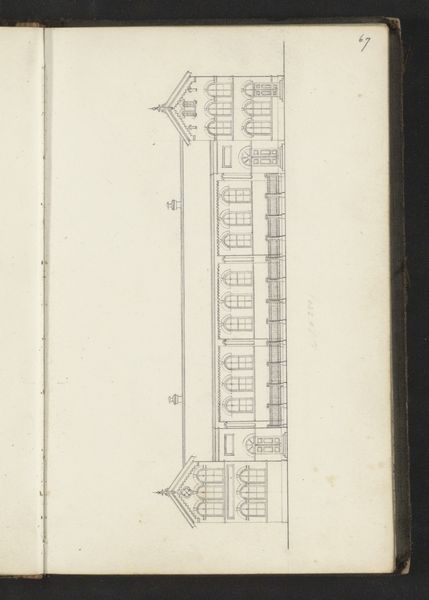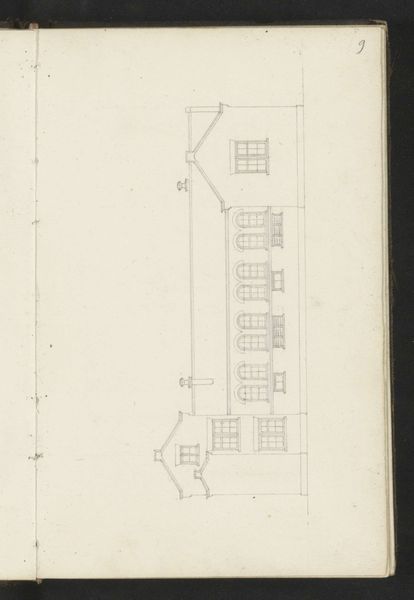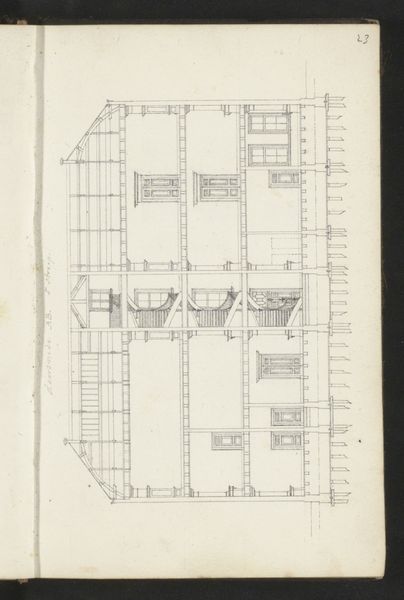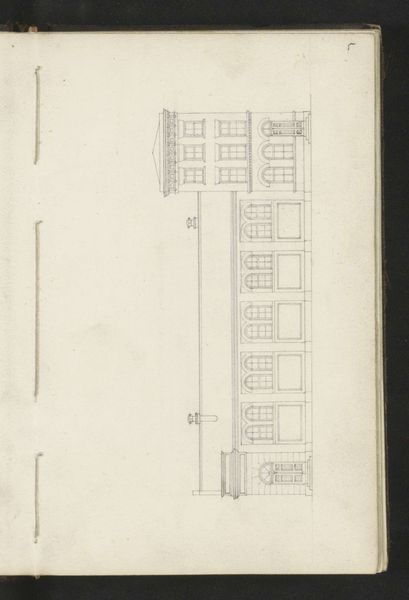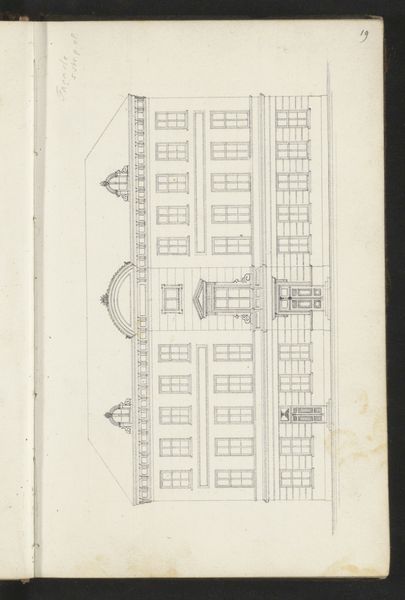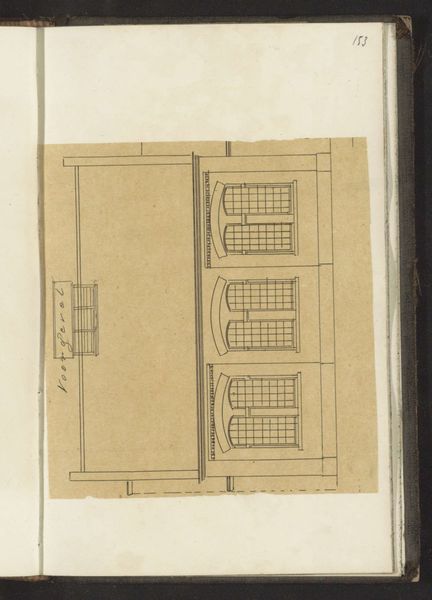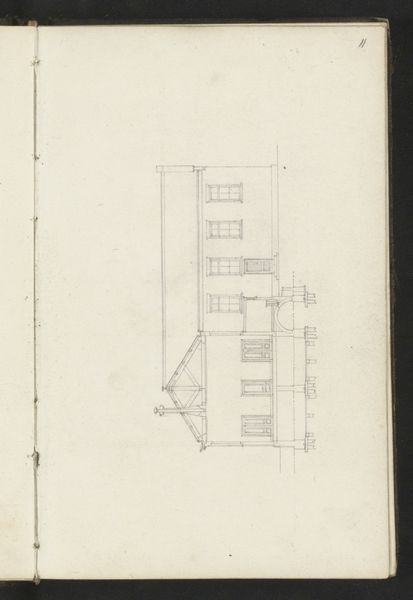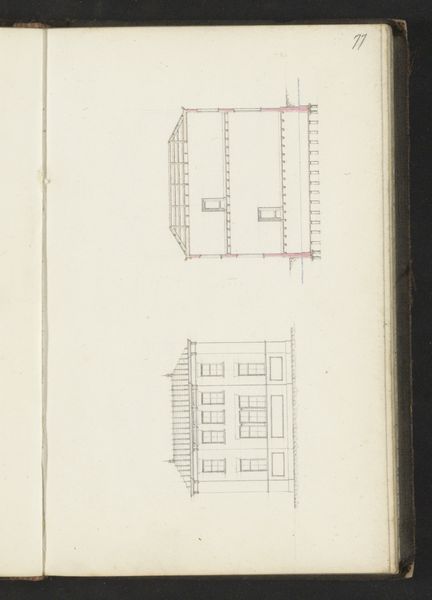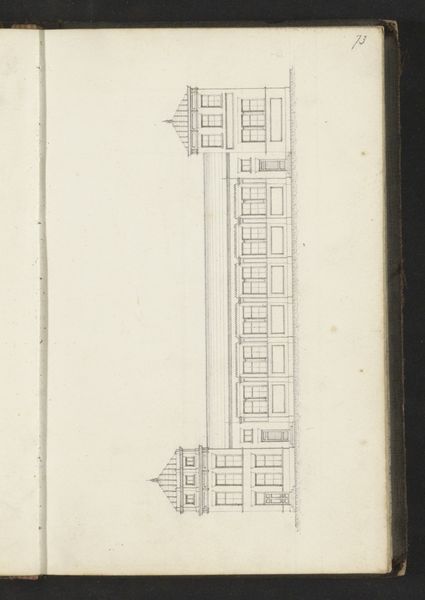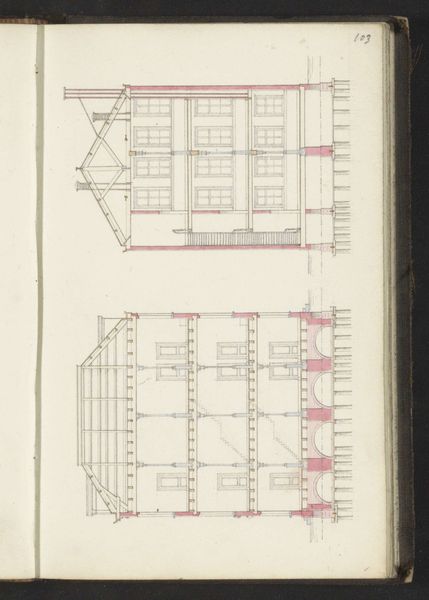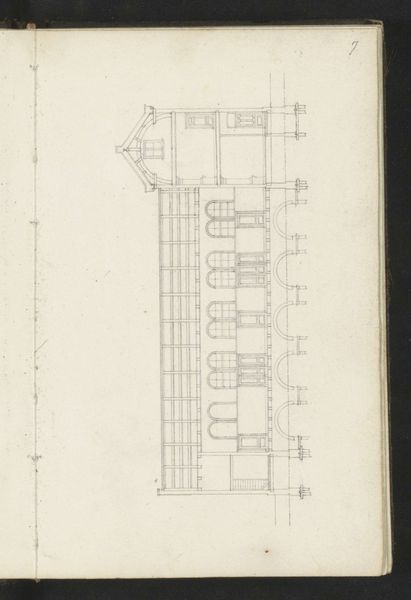
drawing, pencil, architecture
#
drawing
#
pencil
#
cityscape
#
architecture
#
realism
#
building
Copyright: Rijks Museum: Open Domain
Editor: Here we have Willem Springer Jr.'s "Opstand van de façade van een gebouw," or "Elevation of a Building Facade," circa 1864. It's a pencil drawing, almost like an architectural blueprint. What's striking to me is its intense focus on precision and detail; what story do you think it might tell? Curator: It is fascinating to see this type of architectural drawing. Think about mid-19th century Amsterdam – this kind of precision wasn't just about aesthetics. It was tied to the rise of a wealthy merchant class who sought to display their status through increasingly elaborate facades. How might a building like this have reinforced social hierarchies? Editor: So, the facade becomes a sort of visual representation of status and power. It is interesting how such a simple drawing can hint at larger socio-economic dynamics. Curator: Exactly. Moreover, drawings like these played a key role in shaping public perception of urban space. Consider, who would have seen these drawings? Likely architects, patrons, and perhaps city officials. This raises the question: whose vision of the city was being promoted and normalized? Editor: That's a great point! It was less about democratic representation and more about the vision of a specific elite class dictating what the city "should" look like. Curator: Precisely. And museums later collect these, exhibiting these architectural records to a larger public. We have to think critically about the narrative we are presenting, of whose vision of cityscapes is being remembered and displayed. What did you take away from this drawing? Editor: I hadn't thought about how seemingly technical drawings could reveal so much about the socio-political forces at play in shaping a city. I'll definitely look at architectural drawings differently now! Curator: It’s a reminder that art is never created in a vacuum. It’s crucial to analyze its cultural and historical context.
Comments
No comments
Be the first to comment and join the conversation on the ultimate creative platform.

